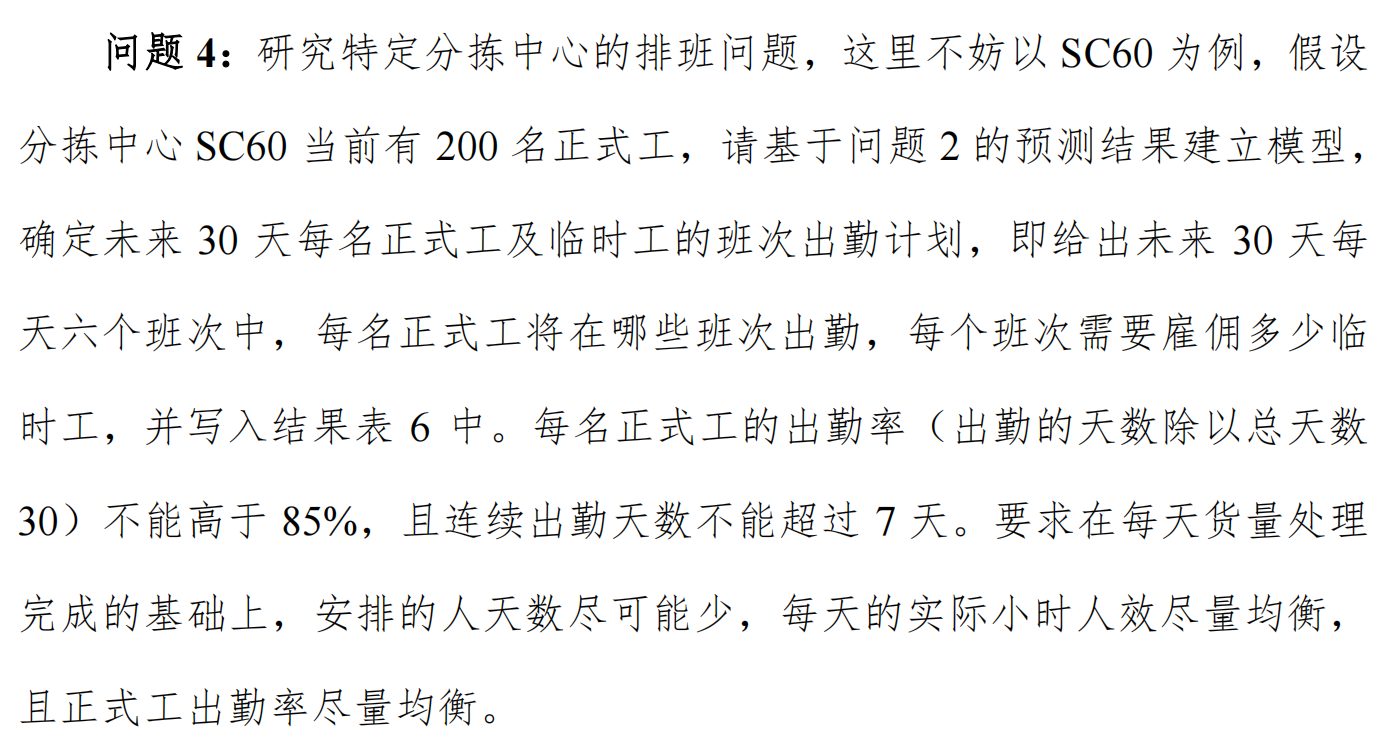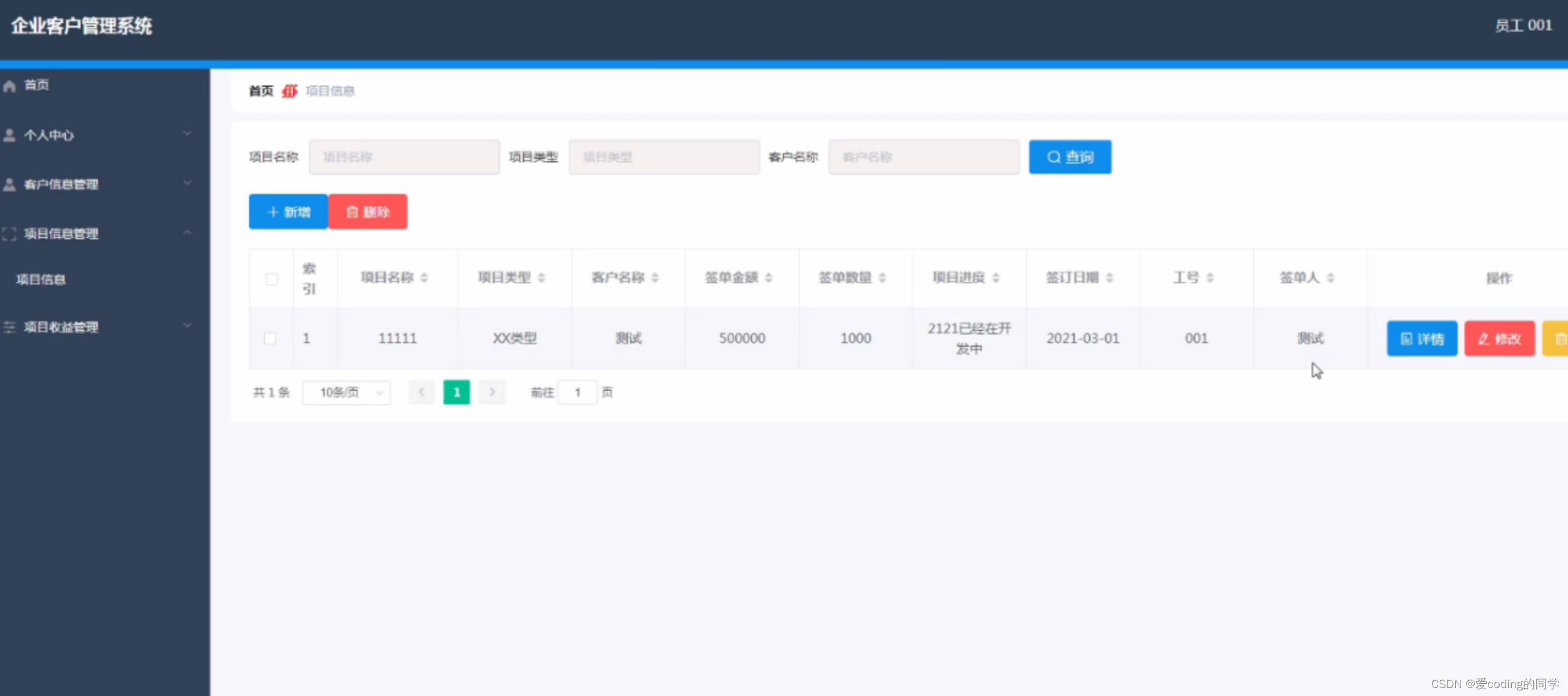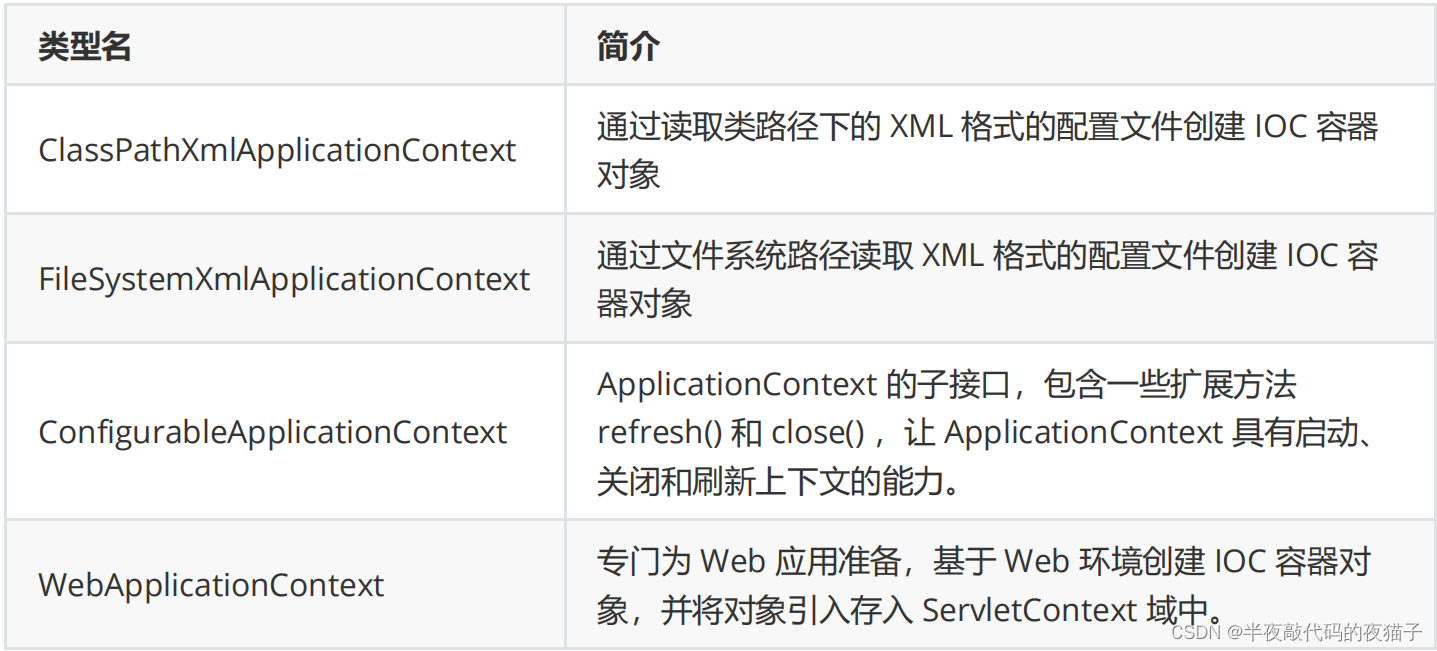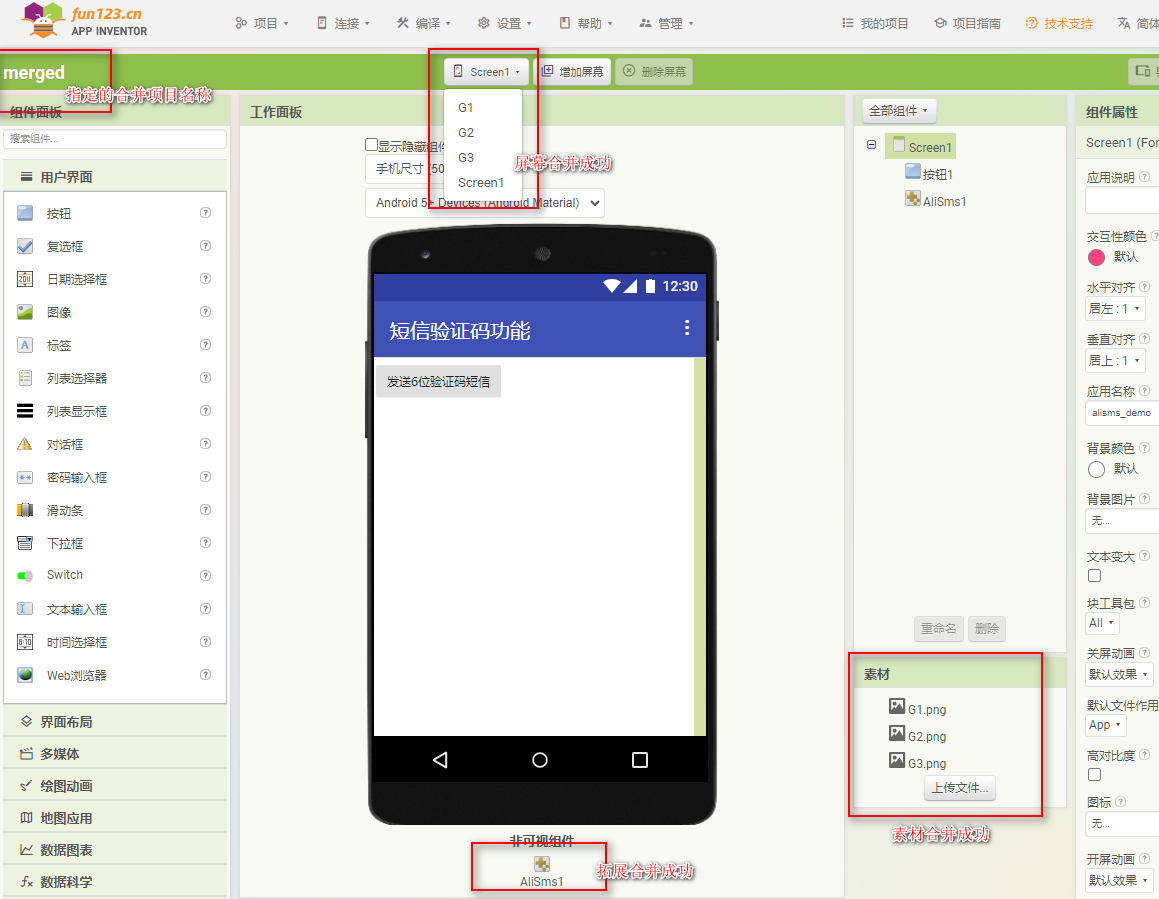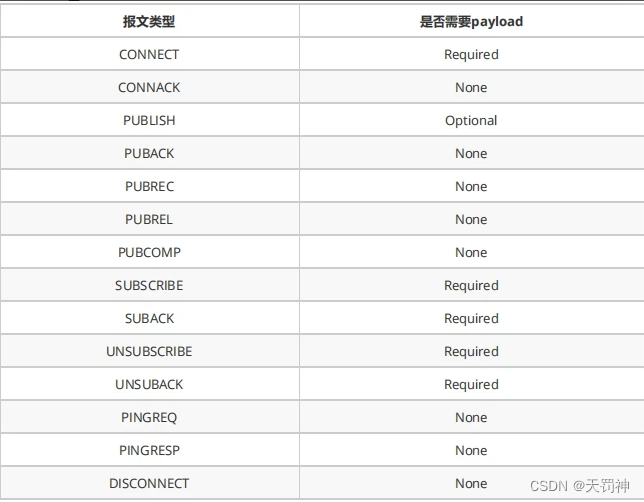😁博客主页😁:🚀https://blog.csdn.net/wkd_007🚀
🤑博客内容🤑:🍭嵌入式开发、Linux、C语言、C++、数据结构、音视频🍭
⏰发布时间⏰:2024-04-15 08:58:04
本文未经允许,不得转发!!!
目录
- 🎄一、概述
- 🎄二、为什么需要条件变量
- 🎄三、条件变量相关函数
- ✨3.1 条件变量的初始化
- ✨3.2 条件变量的销毁
- ✨3.3 条件变量的等待
- ✨3.4 条件变量的唤醒
- 🎄四、条件变量的使用
- ✨4.1 条件等待的使用
- ✨4.2 条件唤醒的使用
- ✨4.3 条件变量使用例子
- 🎄五、总结
![]()
🎄一、概述
多线程编程中,涉及到线程并发,因此也衍生了一些问题,常见的有2类问题:
- 1、多个线程访问同一个共享资源,这个可以用上篇文章 线程同步|互斥量的介绍和使用 介绍的互斥量来解决;
- 2、某些线程运行后,有时需要等待一定的条件才会继续执行,如果条件不满足就会等待,而条件的达成, 很可能取决于另一个线程。
本文要介绍的条件变量主要是解决上面的第二个问题。条件变量用来阻塞一个线程,直到某条件满足为止。通常条件变量和互斥锁同时使用。
条件变量是利用线程间共享的全局变量进行同步的一种机制,主要包括两个动作:一个线程等待"条件变量的条件成立"而挂起;另一个线程使"条件成立"(给出条件成立信号)。
![]()
🎄二、为什么需要条件变量
因为如果不使用条件变量,线程就需要 轮询+休眠 来查看是否满足条件,这样严重影响效率。
下面是不使用条件变量的代码:
1、创建一个线程作为生产者,一秒生成一个产品;
2、创建两个线程作为消费者,分别一秒消耗一个产品,此时消费者线程 不得不每隔一秒就查询是否有数据;
3、需要添加"linux_list.h"头文件,文件在下面会给出,它是Linux内核使用的一个链表。需要了解使用方法的,可以看这文章【数据结构】list.h 详细使用教程
// 09_producer_consumer.c
// gcc 09_producer_consumer.c -lpthread
#include <stdio.h>
#include <stdlib.h>
#include <pthread.h>
#include "linux_list.h"#define COMSUMER_NUM 2typedef struct _product
{struct list_head list_node;int product_id;
}product_t;struct list_head productList;// 头结点
pthread_mutex_t product_mutex = PTHREAD_MUTEX_INITIALIZER; // productList 的互斥量// 生产者线程,1秒生成一个产品放到链表
void *th_producer(void *arg)
{int id = 0;while(1){product_t *pProduct = (product_t*)malloc(sizeof(product_t));pProduct->product_id = id++;pthread_mutex_lock(&product_mutex);list_add_tail(&pProduct->list_node, &productList);pthread_mutex_unlock(&product_mutex);sleep(1);}return NULL;
}// 消费者线程,1秒消耗掉一个产品
void *th_consumer(void *arg)
{while(1){pthread_mutex_lock(&product_mutex);if(!list_empty(&productList)) // 不为空,则取出一个{product_t* pProduct = list_entry(productList.next, product_t, list_node);// 获取第一个节点printf("consumer[%d] get product id=%d\n", *((int*)arg), pProduct->product_id);list_del(productList.next); // 删除第一个节点free(pProduct);}pthread_mutex_unlock(&product_mutex);sleep(1);}return NULL;
}int main()
{INIT_LIST_HEAD(&productList); // 初始化链表// 创建生产者线程pthread_t producer_thid;pthread_create(&producer_thid, NULL, th_producer, NULL);// 创建消费者线程pthread_t consumer_thid[COMSUMER_NUM];int i=0, num[COMSUMER_NUM]={0,};for(i=0; i<COMSUMER_NUM; i++){num[i] = i;pthread_create(&consumer_thid[i], NULL, th_consumer, &num[i]);}// 等待线程pthread_join(producer_thid, NULL);for(i=0; i<COMSUMER_NUM; i++){pthread_join(consumer_thid[i], NULL);}return 0;
}
下面是"linux_list.h"的头文件:
// my_list.h 2023-09-24 23:07:43
#ifndef _LINUX_LIST_H
#define _LINUX_LIST_Hstruct list_head {struct list_head *next, *prev;
};#define INIT_LIST_HEAD(ptr) do { \(ptr)->next = (ptr); (ptr)->prev = (ptr); \
} while (0)/*** list_empty - tests whether a list is empty* @head: the list to test.*/
static inline int list_empty(const struct list_head *head)
{return head->next == head;
}/** Insert a new entry between two known consecutive entries.** This is only for internal list manipulation where we know* the prev/next entries already!*/
static inline void __list_add(struct list_head *new_node,struct list_head *prev,struct list_head *next)
{next->prev = new_node;new_node->next = next;new_node->prev = prev;prev->next = new_node;
}/*** list_add - add a new entry* @new: new entry to be added* @head: list head to add it after** Insert a new entry after the specified head.* This is good for implementing stacks.*/
static inline void list_add(struct list_head *new_node, struct list_head *head)
{__list_add(new_node, head, head->next);
}/*** list_add_tail - add a new entry* @new: new entry to be added* @head: list head to add it before** Insert a new entry before the specified head.* This is useful for implementing queues.*/
static inline void list_add_tail(struct list_head *new_node, struct list_head *head)
{__list_add(new_node, head->prev, head);
}/** Delete a list entry by making the prev/next entries* point to each other.** This is only for internal list manipulation where we know* the prev/next entries already!*/
static inline void __list_del(struct list_head * prev, struct list_head * next)
{next->prev = prev;prev->next = next;
}/*** list_del - deletes entry from list.* @entry: the element to delete from the list.* Note: list_empty on entry does not return true after this, the entry is* in an undefined state.*/
static inline void list_del(struct list_head *entry)
{__list_del(entry->prev, entry->next);//entry->next = (struct list_head *)LIST_POISON1;//entry->prev = (struct list_head *)LIST_POISON2;
}#ifndef offsetof
#define offsetof(type, f) ((size_t) \((char *)&((type *)0)->f - (char *)(type *)0))
#endif#ifndef container_of
#define container_of(ptr, type, member) ({ \const typeof( ((type *)0)->member ) *__mptr = (ptr);\(type *)( (char *)__mptr - offsetof(type,member) );})
#endif/*** list_entry - get the struct for this entry* @ptr: the &struct list_head pointer.* @type: the type of the struct this is embedded in.* @member: the name of the list_struct within the struct.*/
#define list_entry(ptr, type, member) \container_of(ptr, type, member)#ifndef ARCH_HAS_PREFETCH
static inline void prefetch(const void *x) {;}
#endif/*** list_for_each - iterate over a list* @pos: the &struct list_head to use as a loop counter.* @head: the head for your list.*/
#define list_for_each(pos, head) \for (pos = (head)->next; prefetch(pos->next), pos != (head); \pos = pos->next)/*** list_for_each_safe - iterate over a list safe against removal of list entry* @pos: the &struct list_head to use as a loop counter.* @n: another &struct list_head to use as temporary storage* @head: the head for your list.*/
#define list_for_each_safe(pos, n, head) \for (pos = (head)->next, n = pos->next; pos != (head); \pos = n, n = pos->next)/*** list_for_each_entry - iterate over list of given type* @pos: the type * to use as a loop counter.* @head: the head for your list.* @member: the name of the list_struct within the struct.*/
#define list_for_each_entry(pos, head, member) \for (pos = list_entry((head)->next, typeof(*pos), member); \prefetch(pos->member.next), &pos->member != (head); \pos = list_entry(pos->member.next, typeof(*pos), member))#endif //_LINUX_LIST_H
![]()
🎄三、条件变量相关函数
这小节先介绍条件变量的相关函数接口,条件变量都是要结合互斥量一起使用的,具体用法在下个小节介绍。
✨3.1 条件变量的初始化
POSIX提供了两种初始化条件变量的方法。
-
1、是将
PTHREAD_COND_INITIALIZER赋值给定义的条件变量,如下:#include <pthread.h> pthread_cond_t cond = PTHREAD_COND_INITIALIZER;但这个方法没办法设置条件变量的属性,也不适用于动态分配的条件变量。
-
2、使用
pthread_cond_init初始化条件变量。如下:#include <pthread.h> int pthread_cond_init(pthread_cond_t *cond, const pthread_condattr_t *attr);第二个
pthread_condattr_t指针的入参,是用来设定条件变量的属性的。大部分情况下,并不需要设置条件变量的属性,传递NULL即可,表示使用条件变量的默认属性。
注意:永远不要用一个条件变量对另一个条件变量赋值, 即pthread_cond_t cond_b=cond_a不合法, 这种行为是未定义的。
✨3.2 条件变量的销毁
使用pthread_cond_init初始化的条件变量,在确定不再使用的时候, 就要销毁它。 在销毁之前, 有三点需要注意:
1、使用PTHREAD_COND_INITIALIZE静态初始化的条件变量,不需要被销毁。
2、要调用pthread_cond_destroy销毁的条件变量可以调用pthread_cond_init重新进行初始化。
3、不要引用已经销毁的条件变量, 这种行为是未定义的。
销毁条件变量的接口如下:
#include <pthread.h>
int pthread_cond_destroy(pthread_cond_t *cond);
✨3.3 条件变量的等待
条件变量就是为了与某个条件关联起来使用的,如果条件不满足,就等待(pthread_cond_wait) ,或者等待一段有限的时间(pthread_cond_timedwait) 。POSIX提供了如下条件变量的等待接口:
#include <pthread.h>
int pthread_cond_wait(pthread_cond_t *restrict cond,pthread_mutex_t *restrict mutex);
int pthread_cond_timedwait(pthread_cond_t *restrict cond,pthread_mutex_t *restrict mutex,const struct timespec *restrict abstime);
函数描述:这两个函数都是让指定的条件变量进入等待状态,其工作机制是先解锁传入的互斥量,再让条件变量等待,从而使所在线程处于阻塞状态。这两个函数返回时,系统会确保该线程再次持有互斥量(加锁)。
两个函数的区别:pthread_cond_wait函数调用成功后,会一直阻塞等待,直到条件变量被唤醒。而 pthread_cond_timedwait 函数只会等待指定的时间,时间到了之后,条件变量仍未被唤醒的话,会返回一个错误码ETIMEDOUT,该错误码定义在<errno.h>头文件。
注意:pthread_cond_timedwait指定的时间是绝对时间,而不是相对时间。如果最多等待2分钟,那么这个值应该是当前时间加上2分钟。使用方法可以参考下面代码
struct timeval now;
struct timespec outtime;
memset(&outtime,0,sizeof(outtime));
memset(&now,0,sizeof(now));gettimeofday(&now, NULL);
outtime.tv_sec = now.tv_sec + sec;
outtime.tv_nsec = now.tv_usec * 1000;// pthread_cond_timedwait 执行后,先加锁pMutex、再等待;被唤醒后会加锁pMutex
if(pthread_cond_timedwait(pCond, pMutex, &outtime) == ETIMEDOUT)
{ret = -1;
}
✨3.4 条件变量的唤醒
上面说完了条件等待,接下来介绍条件变量的唤醒。调用完条件变量等待函数的线程处于阻塞状态,若要被唤醒,必须是其他线程来唤醒。POSIX提供了如下两个接口来唤醒指定的条件变量:
#include <pthread.h>
int pthread_cond_signal(pthread_cond_t *cond);
int pthread_cond_broadcast(pthread_cond_t *cond);
pthread_cond_signal 负责唤醒等待在条件变量上的一个线程,如果有多个线程等待,是唤醒哪一个呢?Linux内核会为每个条件变量维护一个等待队列,调用了 pthread_cond_wait 或 pthread_cond_timedwait 的线程会按照调用时间先后添加到该队列中。pthread_cond_signal会唤醒该队列的第一个。
pthread_cond_broadcast,就是广播唤醒等待在条件变量上的所有线程。前面说过,条件等待的两个函数返回时,系统会确保该线程再次持有互斥量(加锁),所有,这里被唤醒的所有线程都会去争夺互斥锁,没抢到的线程会继续等待,拿到锁后同样会从条件等待函数返回。所以,被唤醒的线程第一件事就是再次判断条件是否满足!
![]()
🎄四、条件变量的使用
要清楚条件变量怎样使用?就是要弄清楚条件变量的怎样初始化、销毁、等待、唤醒。通过上个小节的学习,条件变量初始化、销毁应该都可以弄懂,而条件变量的等待、唤醒都使用到互斥量,会显得比较复杂,刚学习时总会不清楚这个互斥量应该锁在哪个位置,也容易被 条件等待 的机制弄晕,这小节就看看写代码时,怎样写条件变量的等待、唤醒。
✨4.1 条件等待的使用
条件变量的等待函数都会用到两个参数,一个是条件变量指针,另一个是互斥量指针。其中,条件变量指针比较好理解,直接把初始化好的条件变量指针传入即可。而互斥量指针参数要求传入一个互斥量地址,那这个互斥量在哪里加锁,哪里解锁呢?
一般情况下,在调用条件等待(pthread_cond_wait)函数之前,会判断条件是否满足,不满足的话才进入条件等待。而这个条件是需要其他线程来使其满足的,这里就出现了多个线程访问共享资源,为了安全地获取和修改共享数据,就需要一个互斥量来同步。到这里可以得出,访问与条件相关的共享资源时,会有一个互斥量锁住这个访问的临界区。那这个互斥量 和 pthread_cond_wait需要的互斥量是不是同一个呢?为什么?假设这两个互斥量不是同一个的话,就会出现一个问题,在判断完条件之后,调用pthread_cond_wait之前,可能条件被修改为满足了,这显然不是我们想要的,我们需要的是“判断条件、不满足就等待”这两个操作直接不会被其他线程干扰到。
所以,使用条件变量等待时,会使用一个互斥量进行加锁,加锁的临界区包含了“①查看是否满足条件、②调用pthread_cond_wait进入条件等待”这两个操作。
🌰举例子:
1、productList是判断条件需要用到的共享资源;
2、product_mutex 是操作时用于加锁的互斥量 productList;
3、product_cond 是条件变量
pthread_mutex_lock(&product_mutex);
while(list_empty(&productList)) // 条件不满足
{pthread_cond_wait(&product_cond, &product_mutex);
}
// 不为空,则取出一个
pthread_mutex_unlock(&product_mutex);
✨4.2 条件唤醒的使用
上面介绍了怎么等待了,那唤醒等待条件就需要另一个线程在操作,这个线程在唤醒之前肯定是要有一个操作令前面等待的条件满足的,然后才是唤醒(pthread_cond_signal)。修改条件,肯定也是被互斥量加锁保护的,那唤醒是放在互斥量加锁的临界区内还是临界区外呢?答案是都可以,但放在临界区外,会效率更高。
从前面知道,pthread_cond_wait函数返回时,系统会确保该线程再次持有互斥量(加锁)。也就是说,条件等待的线程被唤醒后会再次对互斥量加锁。知道这点后,再看上面说的两个情况。
唤醒(
pthread_cond_signal)在临界区内的代码如下,会出现线程被唤醒了,并没能第一时间获取到互斥量,需要等到下面第4行执行后,才获取到互斥量,所以效率低一点。thread_mutex_lock(&product_mutex); list_add_tail(&pProduct->list_node, &productList); // 改变了条件 pthread_cond_signal(&product_cond); pthread_mutex_unlock(&product_mutex);
唤醒(
pthread_cond_signal)在临界区外的代码如下,因为先解锁了条件变量,所以thread_mutex_lock(&product_mutex); list_add_tail(&pProduct->list_node, &productList); // 改变了条件 pthread_mutex_unlock(&product_mutex); pthread_cond_signal(&product_cond);
✨4.3 条件变量使用例子
下面是第二小节的例子使用了条件变量的代码,可以看到不需要sleep来休眠了。
// 09_producer_consumer_cond.c
// gcc 09_producer_consumer_cond.c -lpthread
#include <stdio.h>
#include <stdlib.h>
#include <pthread.h>
#include <string.h>
#include <errno.h>
#include "linux_list.h"#define COMSUMER_NUM 2typedef struct _product
{struct list_head list_node;int product_id;
}product_t;struct list_head productList;// 头结点
pthread_mutex_t product_mutex = PTHREAD_MUTEX_INITIALIZER; // productList 的互斥量
pthread_cond_t product_cond = PTHREAD_COND_INITIALIZER; // 条件变量// 生产者线程,1秒生成一个产品放到链表
void *th_producer(void *arg)
{int id = 0;while(1){product_t *pProduct = (product_t*)malloc(sizeof(product_t));pProduct->product_id = id++;pthread_mutex_lock(&product_mutex);list_add_tail(&pProduct->list_node, &productList);pthread_cond_signal(&product_cond);pthread_mutex_unlock(&product_mutex);sleep(1);}return NULL;
}// 消费者线程,1秒消耗掉一个产品
void *th_consumer(void *arg)
{while(1){pthread_mutex_lock(&product_mutex);while(list_empty(&productList)) // 条件不满足{pthread_cond_wait(&product_cond, &product_mutex);}// 不为空,则取出一个product_t* pProduct = list_entry(productList.next, product_t, list_node);// 获取第一个节点printf("consumer[%d] get product id=%d\n", *((int*)arg), pProduct->product_id);list_del(productList.next); // 删除第一个节点free(pProduct);pthread_mutex_unlock(&product_mutex);}return NULL;
}int main()
{INIT_LIST_HEAD(&productList); // 初始化链表// 创建生产者线程pthread_t producer_thid;pthread_create(&producer_thid, NULL, th_producer, NULL);// 创建消费者线程pthread_t consumer_thid[COMSUMER_NUM];int i=0, num[COMSUMER_NUM]={0,};for(i=0; i<COMSUMER_NUM; i++){num[i] = i;pthread_create(&consumer_thid[i], NULL, th_consumer, &num[i]);}// 等待线程pthread_join(producer_thid, NULL);for(i=0; i<COMSUMER_NUM; i++){pthread_join(consumer_thid[i], NULL);}return 0;
}
![]()
🎄五、总结
本文介绍了Linux多线程编程中常见的条件变量,先是介绍了条件变量相关接口函数,然后介绍了怎么使用条件变量,最后给出了使用条件变量的例子。
学习完上面的内容,看看是否知道下面几个问题的答案:
1、为什么需要条件变量?
2、条件变量为什么需要和互斥量一起使用?
3、pthread_cond_wait函数做了什么操作?
4、既然互斥量和条件变量关系如此紧密,为什么不干脆将互斥量变成条件变量的一部分呢?
5、互斥量加锁的临界区应该包含哪些操作?
6、先唤醒后解锁,还是先解锁后唤醒?
7、为什么条件等待时,使用while来判断条件,而不是用if ?
while(list_empty(&productList)) // 条件不满足
{pthread_cond_wait(&product_cond, &product_mutex);
}

如果文章有帮助的话,点赞👍、收藏⭐,支持一波,谢谢 😁😁😁

